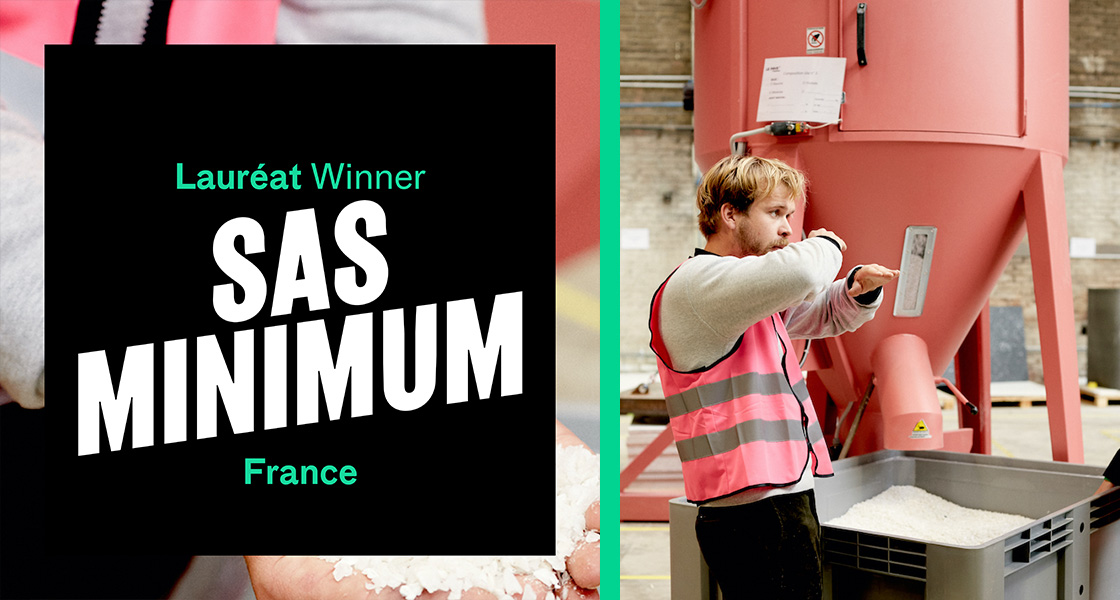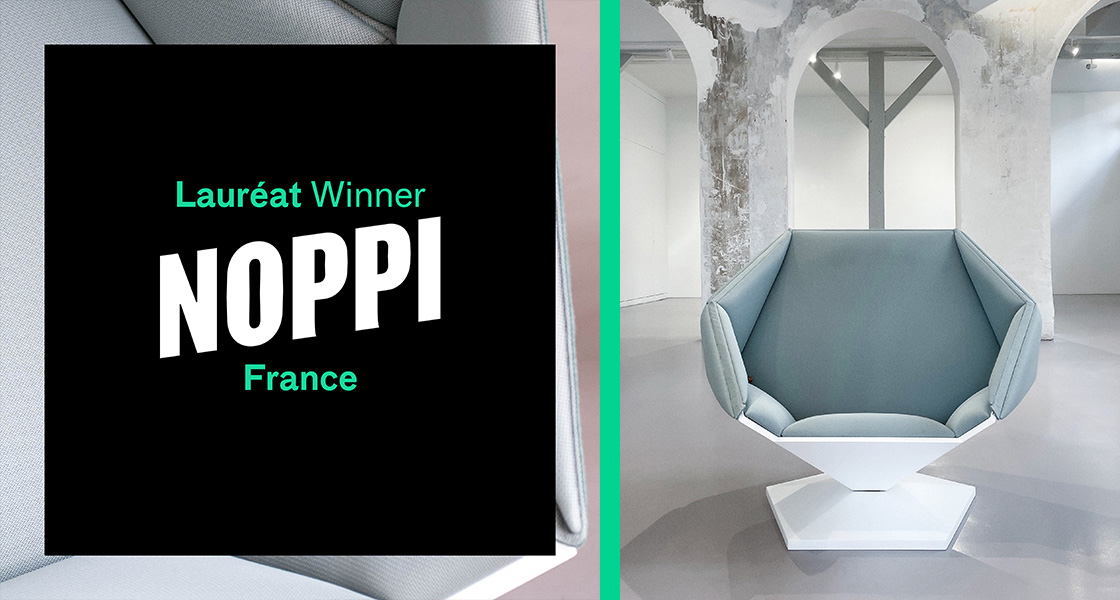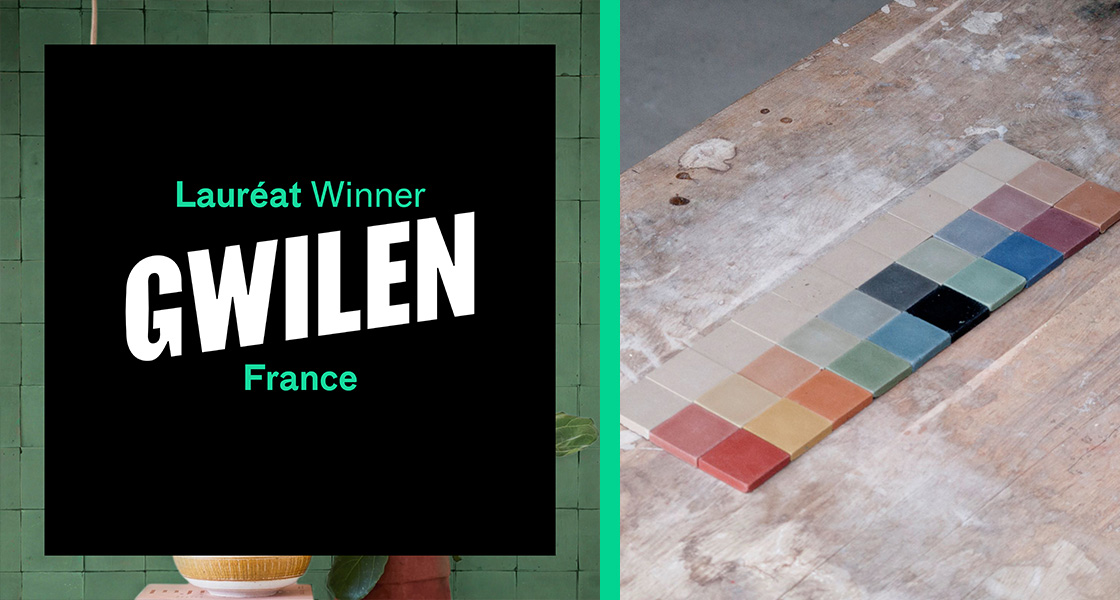Future On Stage: And the brand new brands are
Published on 19 January 2023

Future On Stage's second edition distinguishes Sas Minimum, Noppi and Gwilen. Three young brands whose innovation and revolutionary design start from the existing. What will they be presenting at the Maison&Objet Paris show next March 2023? Here’s to be answered by the winners, each initiator of their own adventures full of potential, where creation equals transformation. Some quotes “Les Mythologies” by Roland Barthes, while others are rather Lévi-Straussian. Inspiring theoreticians to design without subjecting the environment to our concepts for a rediscovered balance.

SAS MINIMUM
What is it?: Aesthetic eco-construction from plastic waste.
Country: France
The story behind the brand: Four students from the Versailles School of Architecture are working on a Campus project in Kenya. They wonder what and how to do when given as little as possible. In 2016, open landfills were numerous on the African continent, so recycling is essential. The student experience then evolves into business. Today, it promotes a 100% French raw material in a circular micro-economy based in the Île-de-France regional area. A social and economic model destined to expand in the whole of France. The workshop also acts as a research centre for the young team of engineers. A new factory will see the light of day in Châlons-sur-Saône, where sourcing partners are located, before territorially expanding.
The innovative idea: A virtuous, versatile material full of solid creative capital.
The flagship product: “Le Pavé®” is presented in solid slabs that can be worked like wood while remaining flexible, water and stain resistant. “Le Pavé®” can cover walls and floors, work plans, counters, and desktops to manufacture furniture or objects. Efficient and aesthetic, “Le Pavé®” offers an opportunity for brands (recently including Sonia Rykiel, Adidas or Veja) to better incorporate their environmental strategy into scenography and staging.
The buzz shot: Seats for the Centre Pompidou (visible on floor -1) and the Olympic Committee. The production of 11,000 folding chairs for the 2024 Olympic Games, including those for the Olympic swimming pool, partly from plugs brought by residents in partnership with the TerraVox association.
How is SAS MINIMUM revolutionary?
Marius Hamelot: “It changes the perception of waste. Our experiments contribute to solving pollution, whether in nature or the oceans while reinventing the building sector. We reintroduce plastic in a long cycle thanks to a unique – and kept secret – thermo-compression process without any added resin, 100% recyclable and 100% recycled.”
What are you preparing for the Future On Stage pavilion?
MH: “We will show Le Pavé® in many different aspects and made without mixing the raw material. We will also present our brand-new product made from polystyrene recycled from fridge doors, for which a name has yet to be decided on.”
What’s next?
MH: “We are preparing new materials from carpeting, shoe soles or milk cartons. 2040 objective: recycle one million tons of material annually; we are now at 300. We are testing bio-sourced solutions such as reed fibre, Mycelium mushrooms, but our priority remains plastic.”

Noppi
What is it?: An item of Modular furniture isolating from noise and promiscuity-induced discomfort.
Country: France
The story behind the brand: The idea was born in 2019 when new neighbours made themselves heard through the walls of Alexandre Guyenne. He then realises the omnipresence of noise and promiscuity in city life. This discomfort mainly impacts three key areas of daily life: concentration, relaxation and sleep. Creating an on-demand calm without interior space loss is necessary for these three uses. After a first career as a construction engineer, he joined forces with Gaël Hiétin, a designer inspired by biomimicry and poly-sensoriality and author for the Société du Grand Paris. Together, they rethink everyday furniture to create personal sub-spaces sheltered from the noise and prying eyes. Thus, intimacy finds its place without taking any.
The innovative idea: Create modular intimacy so as to extract yourself while remaining present, thanks to deployable objects.
The flagship product: “Orri”, an acoustic membrane armchair that opens and stands like an origami. “Orri” releases its wings by pulling on its leather handles, and a protective shell deploys as a cover.
The buzz shot: Visitors shivered with well-being during the last Paris Design Week Factory by unfolding the seat's wings. Articles in the foreign press are pouring in, a Franco-Brazilian online reel reaches 2 million views, and an Argentinian journalist brags about discovering the “little pearl of the PDW”. So many signs showed a real need to be met without a satisfactory existing product.
How is Noppi revolutionary?
Alexandre Guyenne: “Our approach is to design cocoons of intimacy by rethinking everyday furniture to give them the ability to transform into quieter sub-spaces. We must find the balance in our hybrid and shared spaces between social interactions and time for ourselves. We create new access to intimacy at the crossroad of design, science and art”.
What are you preparing for the Future On Stage pavilion?
AG: “Next to Orri's geodesic shapes, we will unveil our new protective chair: “Wrap”. It is made up of tubular steel structures, and its textile maintains its curves, cylindrical this time, in different positions”.
What’s next?
AG: “We want to create a publishing house that brings together a group of designers who are sensitive to our approach of bringing calm and intimacy to our daily lives. We develop our strategy by working on objects other than seating items. We are also thinking about new shared space solutions.”

Gwilen
What is it?: The mud found in harbours becomes a material with a marvellous colour chart.
Country: France
The story behind the brand: “Gwilen” is a term from the Breton dialect and refers to the Vilaine river, whose estuary has been silted up since the dam's construction. Five years ago, Yann Santerre, who grew up very close to the river’s mouth, performed transformation trials with this invasive vase. He has since developed a no-bake process that solidifies these sediments for use in construction and design. Accompanied since 2018 by the Brest Iroise Gwilen technology park, he presented prototypes at the Milan furniture fair the following year, created his company, settled in Brest, and unveiled his first objects at Paris Design Week in 2021. A lamp, a console and splashbacks with raw, oiled or waxed finishes that natural pigments tint in the mass in a colour chart that invites touch. The colour intensities (ranging from lichen green to cerulean blue via coral red and tobacco brown) allow marbling effects or gradients. This remarkable, valuable and stunning work is the 2022 winner of the Cleantech Open and Crisalide industry competitions.
The innovative idea: Valuing marine sediments – a local resource available in substantial quantities, as a design material for sustainable architecture.
The flagship product: Tiles in 21 colours, including natural and light brown.
The buzz shot: A serpentine table of eleven meters long for the “Frugal” exhibition at Paris Hôtel de Coulanges in 2021, curated by Hélène Aguilar from the “Où est le beau?” (“Where is beautiful?”) Podcast.
How is Gwilen revolutionary?
Yann Santerre: “It is the promise to limit the siltation of harbours and the suffocation of biodiversity while creating new construction elements. We have plenty to do: about 100,000 cubic meters of sediment would have to be extracted yearly to restore the ecosystem’s natural appearance.”
What are you preparing for the Future On Stage pavilion?
YS: “We will present a new range of tiles that recounts their sedimentary origin with patterns. We will exhibit our lamp in two formats, for which we are looking for a publisher. One has just produced a coffee table and a side table, it is still quite early to reveal them, but they will be visible on our fair booth.”
What’s next?
YS: “We are starting an 18-month research and development program, which targets other building applications: façade briquettes, paving stones for public spaces or tiling. The goal? Substitute this clay for terracotta or concrete, which require firing at very high temperatures and whose production is polluting.”